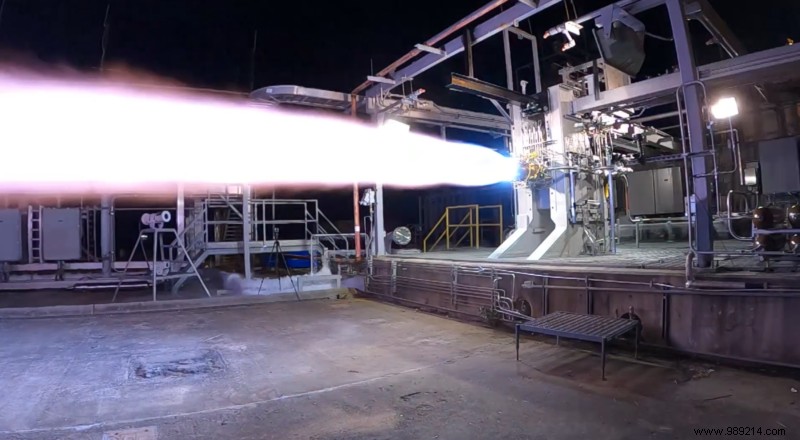Relativity Space is gearing up for its first 3D-printed rocket launch later this year. If successful, the young company could shake up the aerospace industry, just like SpaceX did a few years ago.
While still a teenager, Tim Ellis, the company's co-founder, passed the time by playing with LEGOs for several hours a day, designing his own spaceships. In fact, one of his thumbs is now bent backwards because of this obsession.
This mix of creativity and the desire to build things eventually led him to the University of Southern California in 2008 where he majored in aerospace engineering . He then became involved in the university's Rocket Propulsion Lab, a group of students who built rockets as amateurs, and befriended another aerospace engineer, Jordan Noone. Together, they chained internships before finding themselves at two competing companies:Ellis at Blue Origin and Noone at SpaceX.
Both are then only at the beginning of their careers… However, perhaps because they are still very young (not yet 25 years old), they feel that things are not moving fast enough, focusing in particular on the untapped potential of emerging 3D printing technologies . By printing a rocket, you could indeed drastically reduce the traditional supply chain and require up to a hundred times fewer parts. With enough printers, a rocket could even be "assembled" in days.
Ellis and Noone eventually quit their jobs at the end of 2015, then founded Relativity Space . A few weeks later, the investor Mark Cuban, the owner of the Dallas Mavericks, signs them a check for 500,000 dollars, perceiving in two young engineers a rare potential.

Very quickly, Ellis and Noone joined the Y Combinator, a prestigious program offering investment opportunities to start-up companies. The two engineers then define a company capable of printing its rockets in 3D and develop the first prototype of their printer called "Stargate" . Three months later, they pitch their ideas to some Silicon Valley investors…Then raise ten million dollars in Series A funding.
A little later, in January 2019, they surrounded themselves with David Giger who had just spent almost thirteen years at SpaceX . For the latter, reusable launchers have certainly been the great advance of the last decade, but 3D printing remains the technology of the future.
Upon arrival, Giger matures the Terran 1 Rocket of the company and supervises the tests of its engine dubbed Aeon 1 . It resizes the launch vehicle so that it can deliver more payloads to low orbit, widening the diameter of the fairing to three meters and its height to seven meters. It's not very impressive compared to other launchers, but it's more than enough. A larger fairing would indeed have required a more powerful engine.
A few months ago, Relativity Space also "arranged" with NASA to have several production centers at the US agency's Stennis Space Center (Mississippi). At this precise moment, the two engineers are still in their twenties and their company is not yet five years old. Understand:Huge trust from NASA, and by extension the US government, which obviously isn't fooled.
Engineers are indeed well aware that if they manage to print something as complex as a rocket, then the technique could be widely applied to d 'other industries , which would be a boon for the US economy.

So far everything suggests that this is a real Success Story . A November CNBC report pegged the market value of Relativity (which just raised $500 million) at $2.3 billion , among the highest in the private space industry. For comparison, the leader, SpaceX, was worth around 44 billion dollars last year.
However, the most difficult questions have yet to be resolved. Can a 3D printed rocket really fly? Can his engine run? Can the tanks, plumbing and nine engines be assembled into a complete first stage? We won't know until the Terran 1 rocket is sent into space. That's good:Relativity is planning a launch this fall.